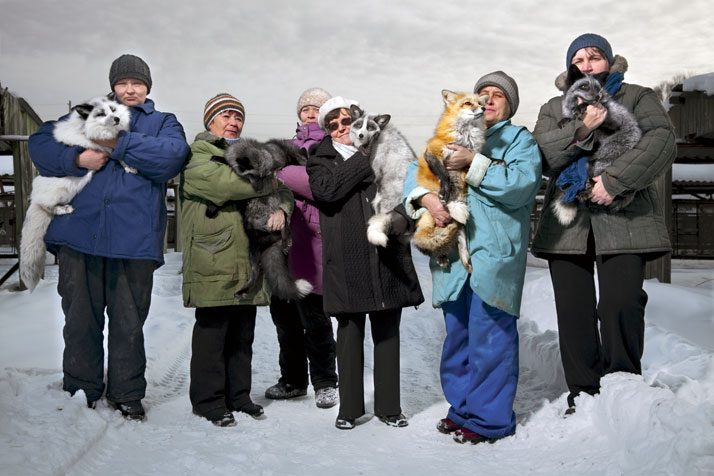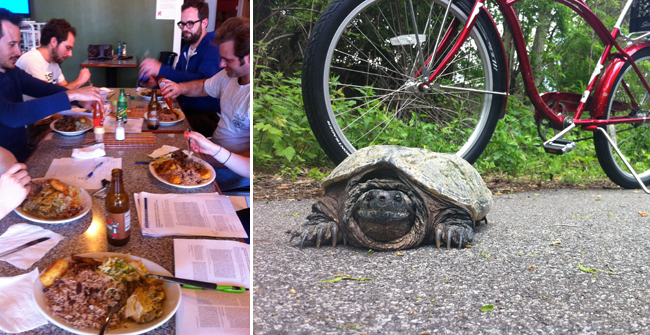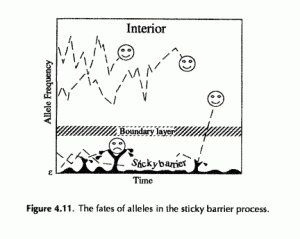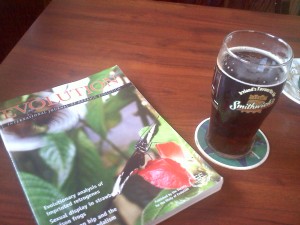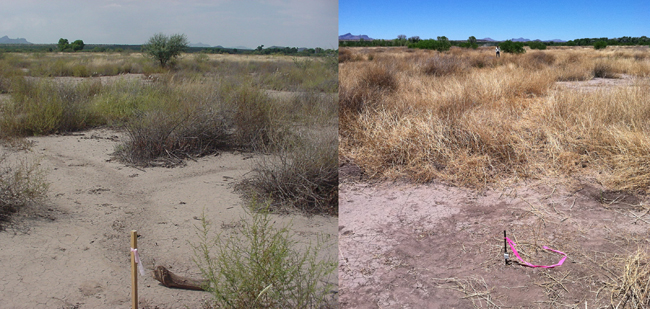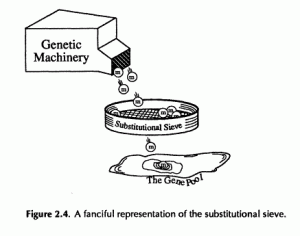We will cover chapter 6, Gillespie’s treatment of the neutral theory on Tuesday, 6/21 at 12:30 in Hutch 316. All are welcome to attend.
Seminar Next Monday on Genetics of Fox Behavior
Next Monday, Dr. Anna Kukekova will be in town to discuss “Genetics of complex behaviors in the silver fox model of animal domestication.” The seminar is at noon in Hutch 473. Dr. Kukekova investigates the genetics of domestication and disease in canines (citations and links to two recent papers are below). Dr. Kukekova was also featured in a recent National Geographic article on “Taming the Wild” and is a consultant for a forthcoming NOVA special on “Dogs Decoded.”
Statham et al. (2011) On the origin of a domesticated species: identifying the parent population of Russian silver foxes (Vulpes vulpes). Biological Journal of Linnean Society 103:168-175 [doi link]
Goldstein et al. (2010) Exonic SINE insertion in STK38L causes canine early retinal degeneration (erd). Genomics 96:362-368 [doi link]
Gillespie Chapter 5
 We will attempt to cover all of chapter 5 on Tuesday, 6/14 at 12:30 in Hutchison 316. At first glance, the math seems a bit simpler than chapter 4.
We will attempt to cover all of chapter 5 on Tuesday, 6/14 at 12:30 in Hutchison 316. At first glance, the math seems a bit simpler than chapter 4.
Bikes and Biology
This Thursday at 1:30PM we’ll be taking another bike expedition to a local eatery. We’ll be discussing two classic papers on community assembly.
Diamond, J. M. and M. E. Gilpin (1982) Examination of the “null” model of Connor and Simberloff for species co-occurrences on islands. Oecologia 52:64-74 [doi link]
Connor, E. F. and D. Simberloff (1979) The assembly of species communities: chance or competition? Ecology 60:1132-1140 [jstor stable URL]
PS – Last week’s outing to the Peppa Pot ended with delicious meals for all! For around $7 you can get a huge plate of Jamaican food including: meat (chicken or oxtail, rice and beans, plantain, duppling, and stewed cabbage.
Gillespie – Chapter 4
Evolution Pub Club: First Meeting this Friday, June 3rd, at 3:30 p.m.
The Evolution Pub Club will kick off this Friday at 3:30 pm at Sheridan’s Irish Pub with an article from the latest issue of Evolution. Since I will not be there this Friday, I will “randomly” pick a paper for discussion:
Wiens, J. J. (2011). Re-Evolution of Lost Mandibular Teeth in Frogs after more than 200 Million Years, and Re-Evaluating Dollo’s Law. Evolution [doi link]
Gillespie – Chapter 3
 We will finish our discussion of chapter 3 (from page 121 to the end) on Tuesday, 5/31. All are welcome. Anthony will lead the discussion.
We will finish our discussion of chapter 3 (from page 121 to the end) on Tuesday, 5/31. All are welcome. Anthony will lead the discussion.
Desert Plant Succession and Fire
The largest impact of humans on deserts is grazing. In western North America, cattle have been present continuously since the 1700’s. Along the Mexican-U.S. border two large tracts of land were removed from grazing in the late 1970’s. The San Bernardino National Wildlife Refuge (www.fws.gov/southwest/refuges/arizona/sanbernardino.html) was established in 1979 because it contains the headwaters of the Rio Yaqui, the largest river in Sonora, Mexico. A number of fish species and a spring snail occur in the U.S. only in this refuge. Directly south, in Mexico, Rancho San Bernardino has not been grazed since 2000 (www.cuencalosojos.org/). We are re-measuring sites first established in 2000 with the vegetation found there today. The data are repeat photography and documentation of species composition and cover. The picture below is one site in an abandoned agricultural field. Major differences are the modest increase in mesquite trees. The mesquite tree in the middle of the picture in 2000 died (probably due to winter freezing). Photos such as these will be compared in sites in riparian, desert marsh, desert scrub, mesquite forest and grassland habitats.
The fire in the Chiricahua Mountains has crossed to the western side of the mountain last Sunday or Monday (22, 23 May). It is now larger than 40,000 acres and will probably burn until the rains begin in early July (www.inciweb.org/incident/2225/).
Next Week’s Bike Expedition: Island Speciation in Birds
For next week’s bike expedition, we’re going to read two recent papers on speciation in island birds (links are below). I’ve also written a short commentary for Molecular Ecology on these papers that I can provide to anyone who’s interested (it’s not yet available on-line). We’ll depart from outside Hutch at 1PM on Thursday, June 2nd. Possible destinations include: Sully’s, New Taj India (Corn Hill Landing), Napa Pizza (South Wedge), Owl House, and S.E.A. (Monroe Ave.).
Melo et al. (2011) Rapid parallel evolution of aberrant traits in the diversification of the Gulf of Guinea white-eyes (Aves, Zosteropidae). Molecular Ecology [doi link]
Sly et al. (2011) Ancient islands and modern invasions: disparate phylogeographic histories among Hispaniola’s endemic birds. Molecular Ecology [doi link]

